Papers by Cristian Vasile
Religion & Gesellschaft in Ost und West, 2024
The text aims to summarize for the German-speaking reader about 100 years of the recent history o... more The text aims to summarize for the German-speaking reader about 100 years of the recent history of the Greek-Catholic Church in Romania

Anuarul Institutului Institutului de Investigare a Crimelor Comunismului şi Memoria Exilului Românesc, 2024
There is a tendency in Romanian historiography that neglects the political context of the postwar... more There is a tendency in Romanian historiography that neglects the political context of the postwar era, especially when it comes to legislative framework of the organization and functioning of museums during communism. In Romanian historical writing many times there was a confusion between legal norm and museum practice. Certain (apparently generous) legal provisions regarding the record of cultural objects and the administration of artistic heritage were taken for granted, ignoring the international legislation and museum practice. In this article I tried to highlight the abovementioned obvious contrast in Romania in the first postwar years by referring to the 1948 correspondence of Bucharestbased communist authorities with the International Council of Museums (ICOM). The diplomatic correspondence clearly shows the lagging behind of the newly established Soviet type Romanian People's Republic at that time, that is the period between 1946 and 1948. The questionnaire filled with important information, sent to ICOM by the Romanian governmental officials probably at the end of May 1948, is an extremely relevant document, because it also represents a significant first balance sheet moment of the first postwar years in the museum field. It was an opportunity to follow what the communist authorities have achieved in this cultural sector and what criteria they used in order to classify museums and art collections. I was interested too in how the property regime evolved in the case of certain collections, especially since in 1948 many nationalizations took place. I also addressed the issue of museum scientific research and the historical archives of museums. Finally, the correspondence with ICOM was an opportunity to follow the controversial history of some museums, mentioned in the answers to the questionnaire or in other related documents .
Revista 22, 2007
Ion Iliescu remained indebted to the rewriting/falsification of his own biography, unable to admi... more Ion Iliescu remained indebted to the rewriting/falsification of his own biography, unable to admit that, at one point, he was a cog of the totalitarian mechanism. The former Romanian president has not really reconsidered his options and unfortunate or questionable political decisions. Ion Iliescu did not assume a real process of "political learning". Ion Iliescu has neither the conscience nor the will of living in truth.

Revista de Artă și Istoria Artei, 2023
This paper aims to analyze the plan envisioned by the leadership of the Ministry of Arts (later: ... more This paper aims to analyze the plan envisioned by the leadership of the Ministry of Arts (later: Ministry of Arts and Information, Committee for Art, etc.) regarding the reorganization of Romanian museums in the first years after March 6, 1945, that is after the communist takeover. My presentation will try to capture both the most important political stakes around the changing of the legislation regarding the functioning of Romanian museums (in October 1946), as well as the official perspectives regarding Romanian art and its main currents, with a special look at interwar modernism. This theme is a challenging one for both historians and art historians, since some representatives of interwar modernism became members of the high cultural and artistic bureaucracy endorsed by the communist government (M.H. Maxy, for example), but were constrained in the new political context to give up their old artistic style as well as pre-1944 conceptions regarding cultural life and museums. Using open sources (the main laws relating to the organization of museums), as well as archival materials (mainly documents kept at the Central Historical National Archives), my paper will also focus on both the continuity and the differences concerning political and museum concepts from one minister of Arts to another (mainly Mihail Ralea, Octav Livezeanu, and Eduard Mezincescu).

Revista istorică, 2022
Many Romanian historians tackled the interwar period themes. The academic interest grew after 198... more Many Romanian historians tackled the interwar period themes. The academic interest grew after 1989, when political censorship disappeared. However, less was written about the institutional realities of cultural life between the two world wars. When the topic was addressed, however, the period was not analyzed in its entirety, but rather sequentially; even the extremely well-documented monograph of Irina Livezeanu (Cultural Politics in Greater Romania), a reference book even today, excludes the 1930s from the analysis. Our aim is to capture the main institutional transformations between 1918 and 1941 by analyzing the activities of two relevant governmental departments (the Ministry of Education and the Ministry of Religious Denominations and Arts), trying to consider each ministry separately. First of all, in addition to the legislative changes that targeted the government departments responsible for managing the cultural, artistic and educational fields, we were also interested in the profile (political, intellectual, and moral) of the incumbent minister who was at the head of the above mentioned ministries. Personalities such as Octavian Goga, P.P. Negulescu, Alexandru Lapedatu, Vasile Goldiş, Aurel Vlad, Dimitrie Gusti, Nicolae Iorga, and Ion Petrovici were viewed as political dignitaries managing cultural policies. Secondly, we addressed sensitive issues such as the democratization of culture and the cultural politics’ inclination toward collectivism and nationalism; the criteria for selecting ministerial staff; the subsidies for the cultural field; the establishment and functioning of interest groups at the head of the aforementioned ministries; centralization and decentralization, as dimensions of cultural policies throughout the two decades after 1918; and last but not least the conflict between generations in the context of the interwar “cultural crisis.” Our hypothesis, confirmed during this in-depth study, was that the cultural ideological orientations and tendencies towards collectivism, centralism and nationalism developed at governmental and ministerial level, became accentuated after 1933. In general, we used open sources and, in some cases, archival documents, especially from the collections of the Ministry of Arts and the Ministry of National Education. In the future, in-depth archival research could nuance or change some of the assertions made here.

Revista istorică, 2021
The aim of this paper is to explore the stance adopted by N. Iorga towards the personal rule of K... more The aim of this paper is to explore the stance adopted by N. Iorga towards the personal rule of King Carol II of Romania, paying particular attention to his last diary, published in 2019, archival documents (edited or unpublished), as well as other writings. Based on these considerations, this article is an attempt to provide a definition of the nature of the political regime of the late 1930s, as well as an assessment of N. Iorga’s position in the context of an authoritarian rule that suppressed political parties, the free press and independent trade unions.
We have also tried to capture and clarify some paradoxes; the most important is the political-governmental component of the new regime established in February 1938: the political system of the royal dictatorship (also called “authoritarian monarchy,” “authoritarian regime,” “regime of monarchical authority”), on the one hand, imitated many features of the Italian fascist regime, and, on the other hand, applied various public policies with the help of politicians who had been left/center-left oriented in the past (Mihail Ralea, Mihail Ghelmegeanu, Petre Andrei and others). The latter even reached the position of ministers in important government departments (Labor, National Education, even the Internal Affairs Ministry). The object of our analysis is mainly focused on the attitude of N. Iorga towards this political-ideological phenomenon of co-optation of some politicians who in the interwar period were perceived as embodying the left wing politics in Romania. In this regard, we emphasized especially the interaction between Iorga and M. Ralea, minister of Labor (1938–1940), a former leader and ideologue of the National Peasant Party.
Page 1. Church and State in Romania after the Communist Takeover (19451948) «Church and State in ... more Page 1. Church and State in Romania after the Communist Takeover (19451948) «Church and State in Romania after the Communist Takeover (19451948)» by Cristian Vasile Source: Balkan Studies (Etudes ...
Caietele Echinox
"The aim of this article is to tackle the evolution of the censorship mechanisms in communis... more "The aim of this article is to tackle the evolution of the censorship mechanisms in communist Romania under the impact of the 1956 Hungarian revolution, mainly by examining documents issued by the institutional censorship (DGPT). It attempts to give an accurate picture of the Romanian-Hungarian cultural-political relations mainly after October-November 1956 by analyzing the exchange of publications between Romania and Hungary, the regulations that stipulated the import of books, the subscriptions to periodicals, the press, as well as the dynamics of the circulation of ideas between the two countries, especially between the intellectual milieus, preeminently around 1956."
East European Quarterly, Sep 22, 2002
Another serious cause of anxiety for the Greek Catholic clergy was the constant pressure exerted ... more Another serious cause of anxiety for the Greek Catholic clergy was the constant pressure exerted on the Romanian Orthodox Church, especially on the patriarch Nicodim (Nicodemus) by the Moscow Patriarchate, a tool in the hands of the ...
STUDII ŞI MATERIALE DE ISTORIE CONTEMPORANĂ, 2019
The Institute for Legal Research (ICJ) of the Romanian Academy was run in its first years of exis... more The Institute for Legal Research (ICJ) of the Romanian Academy was run in its first years of existence (between 1954 and 1956) by a communist dignitary such as Ion Gheorghe Maurer. The Institute was an example of a strange coexistence between jurists-political activists on the ideological front and eminent scholars academically validated abroad during the pre-communist period. Around the recent history of the ICJ there have been heated debates, especially after some anniversary moments that led to the praising without critical sense of the former director I. Gh. Maurer who after 1961 became prime minister of communist Romania.

Caiete CNSAS, 2017
The significant contribution of Romanian Jewish intellectuals in the
field of Romanian linguistic... more The significant contribution of Romanian Jewish intellectuals in the
field of Romanian linguistics and philology became obvious mainly since the second half of the nineteenth century. Preeminently through their scientific works they brought a decisive enrichment of the Romanian culture during the 19th and 20th centuries. The first generation of such Romanian Jewish scholars is represented by personalities such as Moses Gaster, Heimann Hariton Tiktin (H. Tiktin), I.A. Candrea, Lazar Şăineanu, A. Steinberg, while the second one gathered Alexandru Graur, Jacques Byck, I. Fischer, I. Rizescu, Solomon Marcus and Lucia Wald, F. Edelstein, F. Hasan, Toma Pavel, E. Tauberg, S. Weinberg. Some of them had an unfortunate destiny, despite indisputable spiritual merits, being pushed to marginalization, even expulsion and exile. After many decades
Romanian society chose to try a sort of rehabilitation in the case of Moses Gaster by including him in 1929 in the Romanian Academy, but only as honorary member. Moreover, in the 1930s the discrimination against Jews became a sort of state policy culminating in 1940 with the introduction of Nazi-like anti-Semitic legislation. Alexandru Graur, an outstanding Romanian Jewish linguist, was one of the victims of such type of legislation. He firmly expressed his democratic and Socialist views and as a consequence he was severely beaten in 1936 by young anti-Semitic members of the Fascist Legionary Movement.
The article aims at presenting Alexandru Graur’s political and intellectual biography especially during postwar period, when he became member of the communist cultural intellectual bureaucracy (deputy head of Romanian Broadcasting Society, deputy director of Bucharest Institute of
Linguistics and so on). This paper explores also both his purge from June 1952 and post-1954 political rehabilitation, focusing on the secret police surveillance.
Romania Literara, 2019
The article shed more light on the concepts used by various influential historians regarding post... more The article shed more light on the concepts used by various influential historians regarding postwar political regime ('Communist Regime'; Socialism, Communism, National Communist, National Stalinism, People's Democracy etc.).

Studii si Materiale de Istorie Contemporana, 2018
This paper examines some aspects of the institutional history of postwar Romanian philosophy with... more This paper examines some aspects of the institutional history of postwar Romanian philosophy with a special focus on the Institute of Philosophy of the Academy of People’s Republic of Romania. Using archival sources the aim of this paper is to shed more light on the main aspects of philosophical research during cultural Stalinism and to underline the inflexion points within Romanian „philosophical“ writing between 1948 and 1965. One examined the lack of human resources and its impact on the emergence of Marxist-Leninist philosophy, but also the main research topics studied at the Philosophy Section of the Institute of History and Philosophy and Institute of Philosophy especially in the 1950s. We focused also on the context of unmasking and purges of the „philosophical“ front mainly in late 1950s, underlining the Agitprop fight against Revisionism and „bourgeois“ influence in social sciences.
In 1948 the lack of human resources in the field of philosophical research was obvious from Marxist-Leninist perspective. This was one the reasons why in 1948-49 the communist decision-makers did not support the creation of a separate Institute of Philosophy under the aegis of Romanian Academy. Instead between 1949 and 1953 the communist Agitprop agreed the functioning of a Philosophy Section within the newly born Institute of History and Philosophy (the former Institute of History founded by Nicolae Iorga). The appointment of Constantin Ionescu-Gulian as deputy director of the Philosophy Section of the Institute of History and Philosophy (in 1949) was the Agitprop response to the aforementioned lack of human resources in the field of philosophical research. After some hesitations in 1953-54 the communist party leadership chose again C.I. Gulian as director of the newly-created Institute of Philosophy. By periodical ideological harassment directed against Gulian Agitprop succeeded in fact to control the philosophical research.
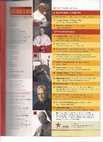
RUBICON, 2019
In general, after 1918 both Romanian state authorities’ perception as well as the Orthodox Church... more In general, after 1918 both Romanian state authorities’ perception as well as the Orthodox Church’s one was that the new unified country had many hostile neighbors, mainly Soviet Union and Hungary. In their views especially the latter has used Roman Catholicism in order to undermine the young Romanian nation state. This was one of the main reasons why the very existence of the Greek Catholic Church was contested in the interwar period. Through the agency of the Concordat, ratified by Romania in 1929, the Greek Catholic Church was established as an Eastern (Byzantine) rite of the Roman Catholic Church in the country, being symbolically split from the Orthodox Romanian religious fold. The Romanian Orthodox high clergy vehemently criticized the Concordat and until 1944 tried to undermine the Greek Catholic Church using its lobby in order to influence the state authorities. Despite the postwar pro-communist secret police attempts to prevent the solidarity between Hungarian Roman Catholics and Romanian Greek Catholics, sometimes using the nationalistic diversion, the cases of cooperation studied in this article proved that this method failed in some cases.

Războiul de fiecare zi. Viaţa cotidiană în tranşee şi în spatele frontului în Primul Război Mondial (1914-1919), Editura Cetatea de Scaun, Târgovişte, volum coordonat de Bogdan Popa, Radu Tudorancea, 2018
In May 1958 in the context of fighting against ideological revisionism in the USSR and in the com... more In May 1958 in the context of fighting against ideological revisionism in the USSR and in the communist bloc several meetings were held in order to unmask and discipline various cultural milieus. During such party gathering prominent historians such as Andrei Oţetea, Nicolae Fotino, Eliza Campus, Vasile Maciu and others were accused of lack of ideological vigilance and undermining the internal “historiographical front”. This article focuses on the 30-31 May 1958 ideological conference, a party meeting organized under the aegis of Romanian Agitprop (Department for Propaganda and Culture led by Leonte Răutu). This party meeting has gathered historians, writers, artists, and various social scientists who were members of the high cultural bureaucracy of the communist regime in Romania. They were also criticized due to the fact that they allegedly distorted one of the crucial historical themes such as the issue of Romanian involvement in World War I (especially the defining of the war in relation to the Leninist ideological label, i.e. “imperialist” war).
Using mainly archival documents issued by the Central Committee of the Romanian Workers’ Party’s ideological departments, and open sources (memoirs, historiographical texts about the Great War, relevant political speeches and so on), the aim of this paper is to identify a possible explanation for the Stalinist-type shook wave that hit Romanian historiography in 1958, focusing especially on the historians who had approached the issue of the First World War.
The two main characters of our article are Andrei Oţetea and Nicolae Fotino. The first was specialized in modern history. The promotion in 1956 of Andrei Oţetea as director of Romanian Academy’s Institute of History opened the era of significant historiographical revisions and influenced the cultural ideological profile of the “Studii” (Historical Studies), the main academic periodical of the aforementioned Institute. This reevaluation program conceived by Andrei Oţetea contradicted the historiographical perspective assumed in the past by Mihail Roller and his collaborators, following the post-1947 official ideological directives of the communist party. In the context of the post-November 1957 Soviet inspired war against revisionism in USSR and East Central Europe, L. Răutu – one of the political protectors of M. Roller – has decided to launch a vast ideological counteroffensive. It was supported by Gheorghe Gheorghiu-Dej, the secretary general of the Central Committee of the Romanian Workers’ Party, the same communist leader who previously seemed to support the post-1953 historiographical reassessments.
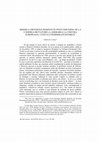
The aim of this paper is to shed more light over the recent past of the
Romanian Orthodox Church ... more The aim of this paper is to shed more light over the recent past of the
Romanian Orthodox Church focusing consistently on the burden represented by a certain type of Church and state relations established after 1945–1948 in the context of the communist takeover in post-war Romania. The sad facet of the Church-state relationship was the collaboration of prominent church leaders with the communist political police, the Securitate, and the Communist Party. After the fall of communist dictatorship, the Orthodox Church hierarchy contributed to what
I call the „politics of fear” by calling for archival documents to remain under lock
instead of being made available to historians.
After examining carefully the historical context which preceded 1989 and
establishing the constitutional and juridical framework, I tried to analyze especially
the Orthodox hierarchy’s attitude regarding controversial issues such as: abortion,
homosexuality, prostitution, coming to terms with the past, and transitional justice.
Its position was sometimes crucial in such issues considering that the Romanian Orthodox Church commands the allegiance of over 80 percent of the population.
As a consequence, the political parties were very careful to deal tactfully with the Church preeminently for electoral reasons The paper also tackled other complicated topics such as the Church’s attitude
towards radical political parties, mainly the far-right Fascist Legionary Movement (the Iron Guard). Before Romania turned communist a significant number of Orthodox clergy supported the extreme-right. Therefore, it is no surprise that an ideologue of the Legionary Movement was mentioned even after 1989 in official church publications as a positive hero of inter-war Romania.
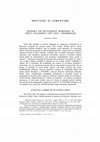
The aim of this study is to examine some less known aspects of the
Romanian educational system hi... more The aim of this study is to examine some less known aspects of the
Romanian educational system history, such as the activity of the Commission on Public Education, a branch of the Agitprop, the circumstances of Social Democrat Ştefan Voitec’s removal from the Ministry of National Education, the institutional changes within artistic, philological and musical higher education institutions, and the pressures exerted by the Propaganda and Agitation Department against professorial body and students.
Using mainly documents of the RCP/RWP’s Propaganda and Agitation
Department, the author contradicts the allegations of the self-serving memoirs due to former chiefs of Romanian propaganda, such as Pavel Ţugui, who presented themselves as saviors of the Romanian Culture, Literature, and Arts. In fact, they acted as Leonte Răutu’s subordinates and drew up Soviet type reports of unmasking famous Romanian writers and aestheticians including Tudor Vianu, professor of Comparative Literature at Bucharest University.
During the interwar period the Romanian educational system became an
instrument of nation building process involving nationalistic trends but without threatening artistic creativity and intellectual pluralism within universities and higher education institutes. On the contrary, after 1947–1948 the educational institutions were brutally integrated within the totalitarian system and forced to accept the Zhdanovite pattern of ideological conformism, and cultural isolation with anti-western tendencies.
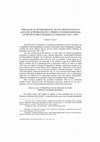
This article’s aim is to shed more light on the Romanian Agitation and
Propaganda Department (Agi... more This article’s aim is to shed more light on the Romanian Agitation and
Propaganda Department (Agitprop)’s perspective during the first communist decade over the World War I issues. I chose this time frame due to the fact that in the Romanian historical writing of this period (1947–1956) the prevailing theses were those of Mihail Roller on the imperialist character of bourgeois Romania’s involvement in World War I. Mihail Roller was the deputy chief of Agitprop, the main ideological section of the Romanian Workers’ Party’s Central Committee (led by Leonte Răutu, Roller’s friend and ideological patron).
On the other hand, in the mid-1950s some „heretical” points of view and
historiographical narratives, which, in the eyes of the Agitprop, threatened to break the ranks of the Romanian historical front, timidly came to light.
The present study focuses on the content of Mihail Roller’s edited historical textbooks (from 1947 until 1956) and the Agitprop’s attempts at maintaining the main narrative established during High Stalinism, i.e. 1948 and 1952, regarding the World War I and Romania’s involvement, labeled as “imperialist.” Such narrative was challenged especially after 1955 when M. Roller lost his position in the Agitprop and the old historians sent complaints to the communist party leadership describing his abuses within the Romanian historiographical community. In the end I argued the importance of the so-called Hungarian factor as a
shock wave for the Romanian politics and culture, modifying in the late 1950s both the contents of the main history textbooks and the historical writing.

The article aims at following the main legislative and constitutional provisions regarding the fu... more The article aims at following the main legislative and constitutional provisions regarding the functioning of humanistic scientific research mainly during High Stalinism, that is, between 1948 and 1953. It also takes into consideration the first post-war years, when several communist programs of reforming the Romanian educational and research system emerged. These early communist plans encountered some difficulties due also to the reluctance or refusal of the social-democratic leadership of the Ministry of National Education (mainly Ştefan Voitec and prof. Miron Nicolescu) to implement them. Controversies of this type between communists and social-democrats ended up in late December 1947 in the context of the abolition of the constitutional monarchy, when Ştefan Voitec became member of the Republican Presidium of the National Assembly and abandoned the Ministry of Education. The study also sheds more light on the contents of the first two Romanian communist constitutions (issued in April 1948 and September 1952), which – significantly enough – underlined the focus on scientific research, mentioning the research institutes. In order to stress the differences between legal norms and practices a number of case studies were considered, for example the functioning of the National Council for Scientific Research of the Romanian Academy and the 1948 laws which abolished the historical research institutes (applied in advance, before coming into force, and with communist secret police-like interventions).
Tudor vianu face parte din acel grup de
intelectuali care a fost victima hărţuirilor
politice ven... more Tudor vianu face parte din acel grup de
intelectuali care a fost victima hărţuirilor
politice venite în egală măsură din partea
puterii atât sub guvernarea de extremă
dreapta, de nuanţă fascistă, cât şi sub regimul
comunist, mai ales în etapa lui stalinistă. /
Romanian Philosopher Tudor Vianu belongs to a not so large group of Romanian Intellectuals who suffered political discrimination both under Fascist-type regime [Antonescu-Legionary Movement dictatorship], and Stalinist system.

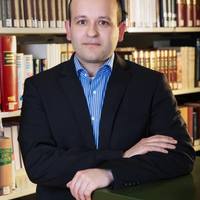

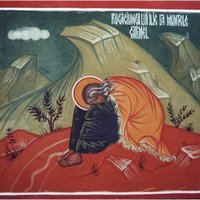
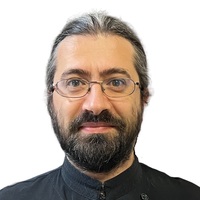
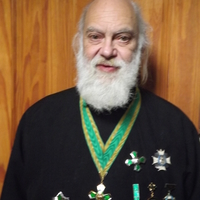


Uploads
Papers by Cristian Vasile
We have also tried to capture and clarify some paradoxes; the most important is the political-governmental component of the new regime established in February 1938: the political system of the royal dictatorship (also called “authoritarian monarchy,” “authoritarian regime,” “regime of monarchical authority”), on the one hand, imitated many features of the Italian fascist regime, and, on the other hand, applied various public policies with the help of politicians who had been left/center-left oriented in the past (Mihail Ralea, Mihail Ghelmegeanu, Petre Andrei and others). The latter even reached the position of ministers in important government departments (Labor, National Education, even the Internal Affairs Ministry). The object of our analysis is mainly focused on the attitude of N. Iorga towards this political-ideological phenomenon of co-optation of some politicians who in the interwar period were perceived as embodying the left wing politics in Romania. In this regard, we emphasized especially the interaction between Iorga and M. Ralea, minister of Labor (1938–1940), a former leader and ideologue of the National Peasant Party.
field of Romanian linguistics and philology became obvious mainly since the second half of the nineteenth century. Preeminently through their scientific works they brought a decisive enrichment of the Romanian culture during the 19th and 20th centuries. The first generation of such Romanian Jewish scholars is represented by personalities such as Moses Gaster, Heimann Hariton Tiktin (H. Tiktin), I.A. Candrea, Lazar Şăineanu, A. Steinberg, while the second one gathered Alexandru Graur, Jacques Byck, I. Fischer, I. Rizescu, Solomon Marcus and Lucia Wald, F. Edelstein, F. Hasan, Toma Pavel, E. Tauberg, S. Weinberg. Some of them had an unfortunate destiny, despite indisputable spiritual merits, being pushed to marginalization, even expulsion and exile. After many decades
Romanian society chose to try a sort of rehabilitation in the case of Moses Gaster by including him in 1929 in the Romanian Academy, but only as honorary member. Moreover, in the 1930s the discrimination against Jews became a sort of state policy culminating in 1940 with the introduction of Nazi-like anti-Semitic legislation. Alexandru Graur, an outstanding Romanian Jewish linguist, was one of the victims of such type of legislation. He firmly expressed his democratic and Socialist views and as a consequence he was severely beaten in 1936 by young anti-Semitic members of the Fascist Legionary Movement.
The article aims at presenting Alexandru Graur’s political and intellectual biography especially during postwar period, when he became member of the communist cultural intellectual bureaucracy (deputy head of Romanian Broadcasting Society, deputy director of Bucharest Institute of
Linguistics and so on). This paper explores also both his purge from June 1952 and post-1954 political rehabilitation, focusing on the secret police surveillance.
In 1948 the lack of human resources in the field of philosophical research was obvious from Marxist-Leninist perspective. This was one the reasons why in 1948-49 the communist decision-makers did not support the creation of a separate Institute of Philosophy under the aegis of Romanian Academy. Instead between 1949 and 1953 the communist Agitprop agreed the functioning of a Philosophy Section within the newly born Institute of History and Philosophy (the former Institute of History founded by Nicolae Iorga). The appointment of Constantin Ionescu-Gulian as deputy director of the Philosophy Section of the Institute of History and Philosophy (in 1949) was the Agitprop response to the aforementioned lack of human resources in the field of philosophical research. After some hesitations in 1953-54 the communist party leadership chose again C.I. Gulian as director of the newly-created Institute of Philosophy. By periodical ideological harassment directed against Gulian Agitprop succeeded in fact to control the philosophical research.
Using mainly archival documents issued by the Central Committee of the Romanian Workers’ Party’s ideological departments, and open sources (memoirs, historiographical texts about the Great War, relevant political speeches and so on), the aim of this paper is to identify a possible explanation for the Stalinist-type shook wave that hit Romanian historiography in 1958, focusing especially on the historians who had approached the issue of the First World War.
The two main characters of our article are Andrei Oţetea and Nicolae Fotino. The first was specialized in modern history. The promotion in 1956 of Andrei Oţetea as director of Romanian Academy’s Institute of History opened the era of significant historiographical revisions and influenced the cultural ideological profile of the “Studii” (Historical Studies), the main academic periodical of the aforementioned Institute. This reevaluation program conceived by Andrei Oţetea contradicted the historiographical perspective assumed in the past by Mihail Roller and his collaborators, following the post-1947 official ideological directives of the communist party. In the context of the post-November 1957 Soviet inspired war against revisionism in USSR and East Central Europe, L. Răutu – one of the political protectors of M. Roller – has decided to launch a vast ideological counteroffensive. It was supported by Gheorghe Gheorghiu-Dej, the secretary general of the Central Committee of the Romanian Workers’ Party, the same communist leader who previously seemed to support the post-1953 historiographical reassessments.
Romanian Orthodox Church focusing consistently on the burden represented by a certain type of Church and state relations established after 1945–1948 in the context of the communist takeover in post-war Romania. The sad facet of the Church-state relationship was the collaboration of prominent church leaders with the communist political police, the Securitate, and the Communist Party. After the fall of communist dictatorship, the Orthodox Church hierarchy contributed to what
I call the „politics of fear” by calling for archival documents to remain under lock
instead of being made available to historians.
After examining carefully the historical context which preceded 1989 and
establishing the constitutional and juridical framework, I tried to analyze especially
the Orthodox hierarchy’s attitude regarding controversial issues such as: abortion,
homosexuality, prostitution, coming to terms with the past, and transitional justice.
Its position was sometimes crucial in such issues considering that the Romanian Orthodox Church commands the allegiance of over 80 percent of the population.
As a consequence, the political parties were very careful to deal tactfully with the Church preeminently for electoral reasons The paper also tackled other complicated topics such as the Church’s attitude
towards radical political parties, mainly the far-right Fascist Legionary Movement (the Iron Guard). Before Romania turned communist a significant number of Orthodox clergy supported the extreme-right. Therefore, it is no surprise that an ideologue of the Legionary Movement was mentioned even after 1989 in official church publications as a positive hero of inter-war Romania.
Romanian educational system history, such as the activity of the Commission on Public Education, a branch of the Agitprop, the circumstances of Social Democrat Ştefan Voitec’s removal from the Ministry of National Education, the institutional changes within artistic, philological and musical higher education institutions, and the pressures exerted by the Propaganda and Agitation Department against professorial body and students.
Using mainly documents of the RCP/RWP’s Propaganda and Agitation
Department, the author contradicts the allegations of the self-serving memoirs due to former chiefs of Romanian propaganda, such as Pavel Ţugui, who presented themselves as saviors of the Romanian Culture, Literature, and Arts. In fact, they acted as Leonte Răutu’s subordinates and drew up Soviet type reports of unmasking famous Romanian writers and aestheticians including Tudor Vianu, professor of Comparative Literature at Bucharest University.
During the interwar period the Romanian educational system became an
instrument of nation building process involving nationalistic trends but without threatening artistic creativity and intellectual pluralism within universities and higher education institutes. On the contrary, after 1947–1948 the educational institutions were brutally integrated within the totalitarian system and forced to accept the Zhdanovite pattern of ideological conformism, and cultural isolation with anti-western tendencies.
Propaganda Department (Agitprop)’s perspective during the first communist decade over the World War I issues. I chose this time frame due to the fact that in the Romanian historical writing of this period (1947–1956) the prevailing theses were those of Mihail Roller on the imperialist character of bourgeois Romania’s involvement in World War I. Mihail Roller was the deputy chief of Agitprop, the main ideological section of the Romanian Workers’ Party’s Central Committee (led by Leonte Răutu, Roller’s friend and ideological patron).
On the other hand, in the mid-1950s some „heretical” points of view and
historiographical narratives, which, in the eyes of the Agitprop, threatened to break the ranks of the Romanian historical front, timidly came to light.
The present study focuses on the content of Mihail Roller’s edited historical textbooks (from 1947 until 1956) and the Agitprop’s attempts at maintaining the main narrative established during High Stalinism, i.e. 1948 and 1952, regarding the World War I and Romania’s involvement, labeled as “imperialist.” Such narrative was challenged especially after 1955 when M. Roller lost his position in the Agitprop and the old historians sent complaints to the communist party leadership describing his abuses within the Romanian historiographical community. In the end I argued the importance of the so-called Hungarian factor as a
shock wave for the Romanian politics and culture, modifying in the late 1950s both the contents of the main history textbooks and the historical writing.
intelectuali care a fost victima hărţuirilor
politice venite în egală măsură din partea
puterii atât sub guvernarea de extremă
dreapta, de nuanţă fascistă, cât şi sub regimul
comunist, mai ales în etapa lui stalinistă. /
Romanian Philosopher Tudor Vianu belongs to a not so large group of Romanian Intellectuals who suffered political discrimination both under Fascist-type regime [Antonescu-Legionary Movement dictatorship], and Stalinist system.
We have also tried to capture and clarify some paradoxes; the most important is the political-governmental component of the new regime established in February 1938: the political system of the royal dictatorship (also called “authoritarian monarchy,” “authoritarian regime,” “regime of monarchical authority”), on the one hand, imitated many features of the Italian fascist regime, and, on the other hand, applied various public policies with the help of politicians who had been left/center-left oriented in the past (Mihail Ralea, Mihail Ghelmegeanu, Petre Andrei and others). The latter even reached the position of ministers in important government departments (Labor, National Education, even the Internal Affairs Ministry). The object of our analysis is mainly focused on the attitude of N. Iorga towards this political-ideological phenomenon of co-optation of some politicians who in the interwar period were perceived as embodying the left wing politics in Romania. In this regard, we emphasized especially the interaction between Iorga and M. Ralea, minister of Labor (1938–1940), a former leader and ideologue of the National Peasant Party.
field of Romanian linguistics and philology became obvious mainly since the second half of the nineteenth century. Preeminently through their scientific works they brought a decisive enrichment of the Romanian culture during the 19th and 20th centuries. The first generation of such Romanian Jewish scholars is represented by personalities such as Moses Gaster, Heimann Hariton Tiktin (H. Tiktin), I.A. Candrea, Lazar Şăineanu, A. Steinberg, while the second one gathered Alexandru Graur, Jacques Byck, I. Fischer, I. Rizescu, Solomon Marcus and Lucia Wald, F. Edelstein, F. Hasan, Toma Pavel, E. Tauberg, S. Weinberg. Some of them had an unfortunate destiny, despite indisputable spiritual merits, being pushed to marginalization, even expulsion and exile. After many decades
Romanian society chose to try a sort of rehabilitation in the case of Moses Gaster by including him in 1929 in the Romanian Academy, but only as honorary member. Moreover, in the 1930s the discrimination against Jews became a sort of state policy culminating in 1940 with the introduction of Nazi-like anti-Semitic legislation. Alexandru Graur, an outstanding Romanian Jewish linguist, was one of the victims of such type of legislation. He firmly expressed his democratic and Socialist views and as a consequence he was severely beaten in 1936 by young anti-Semitic members of the Fascist Legionary Movement.
The article aims at presenting Alexandru Graur’s political and intellectual biography especially during postwar period, when he became member of the communist cultural intellectual bureaucracy (deputy head of Romanian Broadcasting Society, deputy director of Bucharest Institute of
Linguistics and so on). This paper explores also both his purge from June 1952 and post-1954 political rehabilitation, focusing on the secret police surveillance.
In 1948 the lack of human resources in the field of philosophical research was obvious from Marxist-Leninist perspective. This was one the reasons why in 1948-49 the communist decision-makers did not support the creation of a separate Institute of Philosophy under the aegis of Romanian Academy. Instead between 1949 and 1953 the communist Agitprop agreed the functioning of a Philosophy Section within the newly born Institute of History and Philosophy (the former Institute of History founded by Nicolae Iorga). The appointment of Constantin Ionescu-Gulian as deputy director of the Philosophy Section of the Institute of History and Philosophy (in 1949) was the Agitprop response to the aforementioned lack of human resources in the field of philosophical research. After some hesitations in 1953-54 the communist party leadership chose again C.I. Gulian as director of the newly-created Institute of Philosophy. By periodical ideological harassment directed against Gulian Agitprop succeeded in fact to control the philosophical research.
Using mainly archival documents issued by the Central Committee of the Romanian Workers’ Party’s ideological departments, and open sources (memoirs, historiographical texts about the Great War, relevant political speeches and so on), the aim of this paper is to identify a possible explanation for the Stalinist-type shook wave that hit Romanian historiography in 1958, focusing especially on the historians who had approached the issue of the First World War.
The two main characters of our article are Andrei Oţetea and Nicolae Fotino. The first was specialized in modern history. The promotion in 1956 of Andrei Oţetea as director of Romanian Academy’s Institute of History opened the era of significant historiographical revisions and influenced the cultural ideological profile of the “Studii” (Historical Studies), the main academic periodical of the aforementioned Institute. This reevaluation program conceived by Andrei Oţetea contradicted the historiographical perspective assumed in the past by Mihail Roller and his collaborators, following the post-1947 official ideological directives of the communist party. In the context of the post-November 1957 Soviet inspired war against revisionism in USSR and East Central Europe, L. Răutu – one of the political protectors of M. Roller – has decided to launch a vast ideological counteroffensive. It was supported by Gheorghe Gheorghiu-Dej, the secretary general of the Central Committee of the Romanian Workers’ Party, the same communist leader who previously seemed to support the post-1953 historiographical reassessments.
Romanian Orthodox Church focusing consistently on the burden represented by a certain type of Church and state relations established after 1945–1948 in the context of the communist takeover in post-war Romania. The sad facet of the Church-state relationship was the collaboration of prominent church leaders with the communist political police, the Securitate, and the Communist Party. After the fall of communist dictatorship, the Orthodox Church hierarchy contributed to what
I call the „politics of fear” by calling for archival documents to remain under lock
instead of being made available to historians.
After examining carefully the historical context which preceded 1989 and
establishing the constitutional and juridical framework, I tried to analyze especially
the Orthodox hierarchy’s attitude regarding controversial issues such as: abortion,
homosexuality, prostitution, coming to terms with the past, and transitional justice.
Its position was sometimes crucial in such issues considering that the Romanian Orthodox Church commands the allegiance of over 80 percent of the population.
As a consequence, the political parties were very careful to deal tactfully with the Church preeminently for electoral reasons The paper also tackled other complicated topics such as the Church’s attitude
towards radical political parties, mainly the far-right Fascist Legionary Movement (the Iron Guard). Before Romania turned communist a significant number of Orthodox clergy supported the extreme-right. Therefore, it is no surprise that an ideologue of the Legionary Movement was mentioned even after 1989 in official church publications as a positive hero of inter-war Romania.
Romanian educational system history, such as the activity of the Commission on Public Education, a branch of the Agitprop, the circumstances of Social Democrat Ştefan Voitec’s removal from the Ministry of National Education, the institutional changes within artistic, philological and musical higher education institutions, and the pressures exerted by the Propaganda and Agitation Department against professorial body and students.
Using mainly documents of the RCP/RWP’s Propaganda and Agitation
Department, the author contradicts the allegations of the self-serving memoirs due to former chiefs of Romanian propaganda, such as Pavel Ţugui, who presented themselves as saviors of the Romanian Culture, Literature, and Arts. In fact, they acted as Leonte Răutu’s subordinates and drew up Soviet type reports of unmasking famous Romanian writers and aestheticians including Tudor Vianu, professor of Comparative Literature at Bucharest University.
During the interwar period the Romanian educational system became an
instrument of nation building process involving nationalistic trends but without threatening artistic creativity and intellectual pluralism within universities and higher education institutes. On the contrary, after 1947–1948 the educational institutions were brutally integrated within the totalitarian system and forced to accept the Zhdanovite pattern of ideological conformism, and cultural isolation with anti-western tendencies.
Propaganda Department (Agitprop)’s perspective during the first communist decade over the World War I issues. I chose this time frame due to the fact that in the Romanian historical writing of this period (1947–1956) the prevailing theses were those of Mihail Roller on the imperialist character of bourgeois Romania’s involvement in World War I. Mihail Roller was the deputy chief of Agitprop, the main ideological section of the Romanian Workers’ Party’s Central Committee (led by Leonte Răutu, Roller’s friend and ideological patron).
On the other hand, in the mid-1950s some „heretical” points of view and
historiographical narratives, which, in the eyes of the Agitprop, threatened to break the ranks of the Romanian historical front, timidly came to light.
The present study focuses on the content of Mihail Roller’s edited historical textbooks (from 1947 until 1956) and the Agitprop’s attempts at maintaining the main narrative established during High Stalinism, i.e. 1948 and 1952, regarding the World War I and Romania’s involvement, labeled as “imperialist.” Such narrative was challenged especially after 1955 when M. Roller lost his position in the Agitprop and the old historians sent complaints to the communist party leadership describing his abuses within the Romanian historiographical community. In the end I argued the importance of the so-called Hungarian factor as a
shock wave for the Romanian politics and culture, modifying in the late 1950s both the contents of the main history textbooks and the historical writing.
intelectuali care a fost victima hărţuirilor
politice venite în egală măsură din partea
puterii atât sub guvernarea de extremă
dreapta, de nuanţă fascistă, cât şi sub regimul
comunist, mai ales în etapa lui stalinistă. /
Romanian Philosopher Tudor Vianu belongs to a not so large group of Romanian Intellectuals who suffered political discrimination both under Fascist-type regime [Antonescu-Legionary Movement dictatorship], and Stalinist system.
Forgotten Ally: Ion Antonescu and His Regime, Romania 1940-44, Palgrave Macmillan, 2006) is an opportunity to review the precarious state of Romanian historiography, especially in the 1990s. Romanian historical writing has taken refuge in nationalism, seeing a worse syndrome - the favorable orientation towards Marshal Ion Antonescu.
– Convorbiri cu Nicolae Manolescu, Editura
Cartea Românească, Bucureşti, 2017,
400 p. /Interviews with Nicolae Manolescu
tăceanu, Monica Broşteanu, Martori ai
fericirii. Şapte vieţi de sfinţi români, Foreward by Msgr Mihai
Frăţilă, Bucharest/Bucureşti:
Humanitas, 2019, 244 p.
neanu, Trei sute de Ceauşeşti liliputani. (Micro)
istorii personale în dialog, colaje de Mihail Co-
şuleţu, Bucureşti, Editura Humanitas, 2016,
76 p.
solide lecturi din literatura rusă, dar începând din acel moment s-a întors la o lectură sistematică
a beletristicii ruse. Scrise şi publicate între 2013 şi 2015 sub formă de eseuri şi
recenzii în revista „22” şi pe platformele online Lapunkt.ro şi contributors.ro, textele –
reunite de curând în volum – capătă o coerenţă remarcabilă.
Part One: The Romanian Orthodox Church
Prison Saints: Memorialization, Sacralization, and Collective Catharsis by Monica Ciobanu
Go-Betweens and Intersections: The Communist Inspectors for Religious Denominations, a Case Study by Anca Șincan
Collaboration with the Communists in the Orthodox Theological Institutes by Lucian Turcescu
Orthodox Churches and Political Strategies in Romania and Yugoslavia by Lucian N. Leustean
Part Two: Catholic Churches
The Roman Catholic Church during and after the Communist Regime by Zoltán Mihály Nagy and Csaba Zoltán Novák
The Greek Catholic Church: A Troubled Recent Past and a Painful Transitional Justice by Cristian Vasile
Part Three: Protestant Churches
The Reformed Elite Facing the Communist Regime by Csongor Jánosi
Resistance, Conformation and Service: The Unitarian Church during 1945-1965 by János Pál
The Pentecostals and the Legacy of Communism by Vasilică Croitor
formation of intellectual elites during successive projects of
modernization during 19th and 20th centuries. While existing
works on the topic focus either on the elimination of previous
elites in times of radical social change or on the creation of new
elites by each new political regime, we focus on a third
mechanism: the recuperation/conversion of previous intellectual
elites for new modernization projects. This mechanism of
historical and social change appears at every major transition
(“historical disjuncture”) but is given less importance both in
history/social sciences and in public discourse.
Almost without exception, the successive visions of
modernity fail in their attempt to transform the deep social
strata in spite of their explicit goals in that regard. Nevertheless,
each one creates new, imperfect, and fragmentary ways of
intervening and programming the newly instituted populations,
individuals and fields of activity. New conceptual vocabularies
were brought forth – by imitation or explicit distancing – out of
the failed discourses and reforms and larger spaces for expert-led
intervention were opened for subsequent reforms and projects
of modernization.
Scrutinizing the moments of discontinuity in modern and
contemporary Romanian history, this book will argue that, far
from a complete break with a past, each modernization projects
builds on and has to incorporate pre-existing social
processes/resources.
dintre Bisericã ºi stat în perioada comunistã porneºte de la
bun început cu un handicap serios: imposibilitatea studierii
documentelor din Arhiva Sfântului Sinod Ortodox, pãstrate
la mãnãstirea Antim din Bucureºti. Din acest motiv,
istoricii au fost siliþi sã recurgã în principal la materiale ale
Securitãþii identificate în Arhiva SRI ºi în Arhiva CNSAS,
lucru dovedit ºi de lectura primului volum de documente
privind Biserica Ortodoxã sub regimul comunist, editat de
Institutul Naþional pentru Studiul Totalitarismului1. În istoriografia
românã s-a afirmat cã materialul care provine
din zona „duºmanului Bisericii“, PCR, cu braþul sãu secular,
Securitatea, „îºi sporeºte valoarea istoricã, deoarece
vine tocmai din partea celor fãrã Dumnezeu ºi care vor încerca,
pornind chiar din 6 martie 1945 — momentul instalãrii
comunismului — sã elaboreze un plan bine structurat
în câmp tactic ºi strategic prin mize ºi mãsuri care urmãreau,
dacã nu eliminarea definitivã a ortodoxiei ca instituþie
istoricã a poporului român, cel puþin reducerea ºi transformarea
ei într-o anexã-instrument în marile prefaceri
socio-economice din deceniile care au urmat“.
Dr. Petru Groza in March 1945 generated fears among the
Greek Catholic clergy which were considered by the new
prime minister, in the spring of the same year, as „reactionary“.
The first attempt to attract the Greek Catholic
Church towards the Communist side was made through the
agency of ARLUS.
In the course of 1948, after the mysterious death of
Nicodim, the Communist authorities tried to solve the
problem of Uniatism by suppressing the Greek Catholic
Church under the mask of religious „completing“ of the
Transylvanian Romanian Church. In his speech, held on
February 22, 1948 Gheorghiu-Dej launched a merciless
attack against the Vatican and Catholic Church in
Romania, the first major sign that the leadership of the Romanian Communist Party (RCP) followed the Soviet
way of blaming „hostile“ Churches. The Communists did
not hide their intentions to cooperate with the Ortodox
hierarchy and Catholic faithful in isolating the Catholic
elite (metropolitans, bishops and high clergy). They even
contacted several Greek Catholic bishops (Iuliu Hossu and
Vasile Aftenie), proposing them important functions in the
Romanian Ortodox structures in exchange of their „return“
to Orthodoxy.
organization and functioning of the regime’s Propaganda and
Agitation Department (PAD) were the perversion of the discourse
regarding the arts and the harassment of the intellectuals
more or less reluctant to being cowed by the communist politics
of culture. The aim of this book is to follow both the changes
within the Arts Unions and other cultural institutions and the
activity of the Agitprop Department during the Stalinist period
(1948-1953) using recently de-classified archival materials
issued by this Department.
Romania’s writers had long been in the spotlight of the nation’s
artistic and cultural life. They were, moreover, perceived as the
country’s preeminent intellectuals. After consolidating power
in 1948 the Romanian Communist Party (RCP) sought to bring
the writers – despite their seemingly unusable past – over to
the Party’s agenda.
In the aftermath of the Communist takeover, the RCP showed
a particular interest in the use of visual propaganda as part of
the political battle against its enemies. The RCP leadership also
focused upon winning the painters’ and sculptors’ favor in order
to foster the pro-Communist organization, the National Democratic
Front. Two avant-gardists and also sympathizers of the
RCP, M.H. Maxy and Jules Perahim, had to coordinate this recruitment
initiative. The most prominent painters and sculptors came
to terms with the communist regime. In order to impose its cultural program for changing the structure of painters’ creative union, the
Propaganda and Agitation Department used both the avant-garde
and the conservative artists.
Relying mostly upon recently de-classified documents and
secondary literature I attempted to shed more light on both the
imposition of Socialist Realism to Romanian cinema.
policy making process under Romania’s first communist
leader Gheorghe Gheorghiu- Dej, especially during the 1950s
and early 1960s. Using mainly archival sources from the RCP
Propaganda and Agitation Section, and other collections
preserved at the Romanian National Archives, it explores
both the merging of various governmental and ideological
departments, and the reorganization of the Agitprop and other
state institutions in an effort to uncover which among these
organization and ideological bodies were most determinative
of cultural policy.
Without disregarding July 1971 as a decisive moment, in my book I suggest that 1974 could be seen as a turning point due to both the laws adopted (including the change of 1965 constitution), and the proclamation of Ceausescu as president of Romania. The removal of prime minister I. Gh. Maurer (March 1974) and the RCP Program of establishing a Multilaterally Developed Socialist Society and Romania’s Advancement towards Communism (November 1974) were another benchmarks.
Although the book focuses on intellectual and artistic life in communist Romania, it offers some comparisons with experiences elsewhere (Bulgaria, GDR, Czechoslovakia, and USSR).